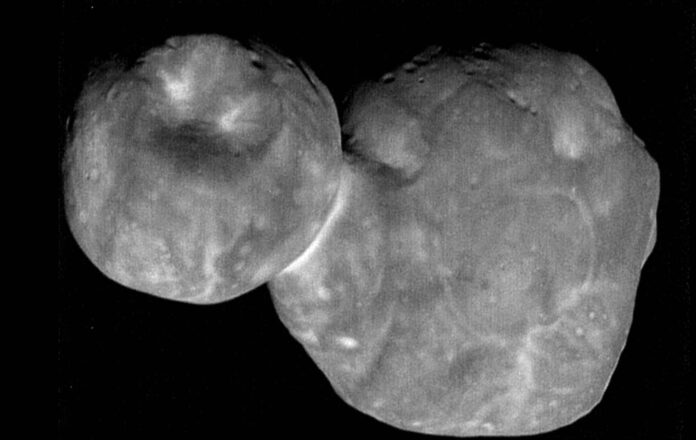
“Ice Bombs”: Unveiling the Mysteries of the Kuiper Belt
Ice bombs – that’s how scientists have begun describing icy space rocks found in the Kuiper Belt, a region of the solar system beyond the planets. Recent studies have revealed that these ‘ice bombs’ may preserve invaluable information.
An Intriguing Celestial Body: 486958 Arrokoth
Kuiper Belt object 486958 Arrokoth is more than just a space rock. Comprising of two uneven disks attached to each other, the celestial body has been compared to a primitive snowman by scientists. This comparison, they have discovered, holds more truth than initially thought. In a recent breakthrough, researchers found that this “snowman” does, in fact, contain ice. Even more interestingly, this ice appears to originate from the era when Arrokoth was formed, billions of years ago. This discovery warrants a closer look at the space rock as the type of ice found is commonly associated with substances that quickly evaporate. According to scientist Sam Birch, who partook in the study, “Many scientists were convinced that this type of ice no longer existed. We now believe otherwise; they can still be found.” The research has been published in the journal Icarus.
Sublimation and Space Rocks
The team, led by Birch, focused their research on Arrokoth, a body located in the Kuiper Belt. Arrokoth was first closely examined when the New Horizons spacecraft flew by it, revealing it to possess a sponge-like structure, as many bodies of similar nature do. Interestingly, no CO gas was detected on the outside, a discovery that scientists found exceptionally peculiar. This puzzling observation was later attributed to a domino effect that occurs within the space rock itself. To understand this, it needs to be emphasized that ‘ice’ in this context doesn’t just refer to ‘water ice’. Substances like carbon monoxide (CO) also alter into a form of ice at extreme low temperatures. With a boiling point of -191.47 degrees Celsius, CO ice will immediately vaporize into gas as it warms up – a process known as ‘sublimation’.
The Domino Effect Explained
Birch provides an explanation for the domino effect: “Essentially, we discovered that it’s so cold inside Arrokoth that the CO ice can only sublimate when the existing cold CO gas first escapes due to the sponge-like structure. However, there is a catch: the present gas can only escape when more ice sublimates. Hence, a domino effect comes into play – it becomes colder in Arrokoth meaning less ice sublimates. This makes it harder for the present cold gas to escape, causing Arrokoth to become even colder. This continues until it becomes so cold the entire process comes to a standstill. The result is an object filled with barely able to escape gas.” This explains why these celestial bodies are now referred to as ‘ice bombs’. As they get closer to the sun, the gas inside the object can suddenly come under pressure, causing violent explosions.
Scientific Treasures:
The findings of the research hold significant ramifications. The CO ice (and gas) in Arrokoth has managed to sustain itself for billions of years. Birch explains, “Our research has shown that these primitive ice types can be trapped in KBO’s. It’s likely that many primitive substances (from billions of years ago) could be confined within objects located on the fringes of our solar system.”
Co-researcher and team member Orkan Umurhan concludes, “In this study, we corrected an error in the physical model scientists commonly use for old and cold objects. Consequently, our findings could potentially revolutionize theories about the formation of comets. Not only that, they might also shift perspectives on what exactly occurs within a space rock.”











